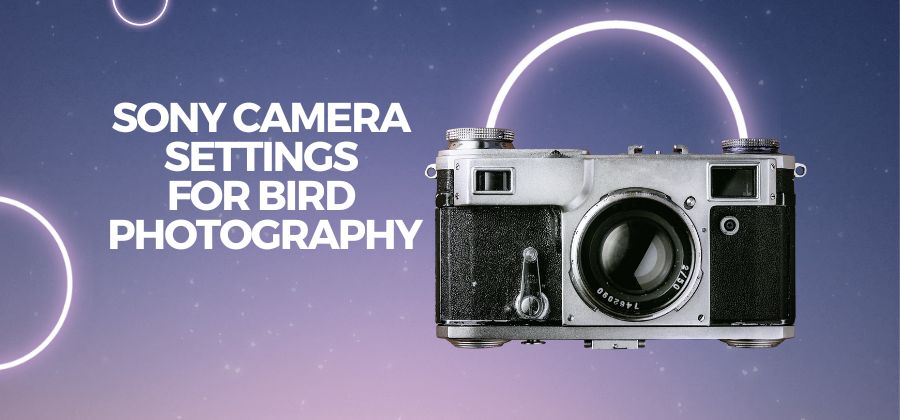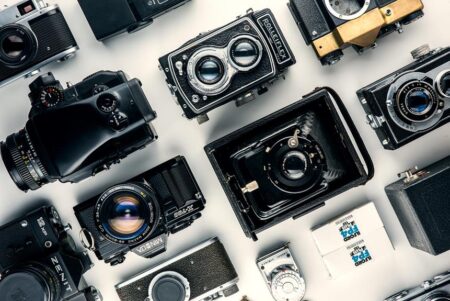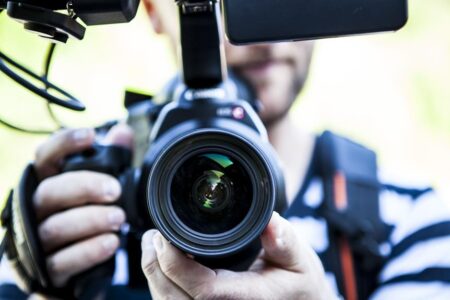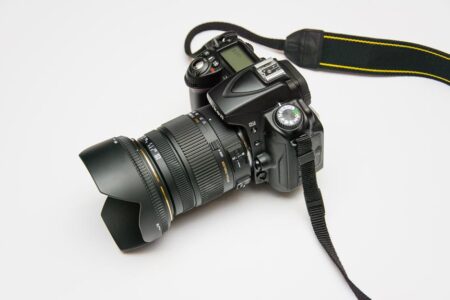
Bird photography requires a combination of skill, patience, and the right equipment. Sony cameras, known for their advanced features, offer a plethora of settings that can greatly enhance your bird photography experience. In this guide, we’ll explore essential Sony camera settings tailored specifically for capturing stunning bird images.
Understanding Focus
One of the critical elements in bird photography is achieving precise focus. Sony cameras provide various focus-related settings to optimize your shots.
Focus Mode: Continuous AF
When photographing birds in motion, set your camera’s Focus Mode to Continuous AF. This ensures that the camera continually adjusts focus, crucial for capturing birds in flight or those engaged in rapid movements.
Focus Area: Tracking Options
Selecting the right Focus Area is vital for keeping your subject sharp. Sony cameras offer different tracking options:
- Tracking: Zone
- Tracking: Spot M
- Wide
Experiment with these settings based on your bird photography scenario. Zone tracking works well for birds in groups, while spot tracking is ideal for isolated subjects.
Face/Eye AF for Birds
Sony cameras feature advanced Face/Eye AF technology, and configuring it properly can significantly improve bird eye sharpness.
- Face/Eye Prior. in AF: Turn this option On to prioritize face/eye detection in autofocus.
- Face/Eye Subject: Specify the subject as Bird for optimized bird detection.
Priority Set in AF-C
Adjusting the Priority Set in AF-C to Balanced Emphasis ensures a balanced focus approach, critical for maintaining sharpness in dynamic bird scenes.
Menu Configuration
Sony cameras come with an extensive menu system, allowing you to fine-tune various settings. Let’s explore some essential menu configurations for bird photography.
[ Focus Mode]
Set to: Continuous AF
[ Focus Area]
Choose from: Tracking: Zone, Tracking: Spot M, Wide
[Face/Eye AF]
Configure: Face/Eye Prior. in AF – On, Face/Eye Subject – Bird
[Priority Set in AF-C]
Adjust to: Balanced Emphasis
Experiment with these menu settings based on your specific shooting conditions to optimize focus and tracking.
Shutter Speed Considerations
Birds are often fast-moving subjects, making an appropriate shutter speed crucial for capturing them with clarity.
Birds are often fast-moving subjects, making an appropriate shutter speed crucial for capturing them with clarity. A recommended starting point is setting your camera to a minimum shutter speed of 1/1000 second. However, depending on the bird’s size and speed, you might need to experiment with higher speeds, such as 1/2000 or even 1/4000, to freeze their motion effectively.
Exposure Settings for Optimal Results
Understanding exposure is key to achieving well-lit and balanced bird photographs. Sony cameras offer various exposure settings that can be fine-tuned for different lighting conditions.
Exposure Compensation
In challenging lighting situations, using Exposure Compensation can help you achieve the desired brightness. If a bird is against a bright sky, dial in positive exposure compensation to avoid underexposure.
F-number and Aperture
Controlling the aperture, represented by the F-number, allows you to manage the depth of field in your bird images. Lower F-numbers (wider apertures) result in a shallower depth of field, ideal for isolating a bird from its background.
Film Speed (ISO) and Noise Reduction
Setting the right Film Speed (ISO) is crucial for obtaining well-exposed images, especially in low-light conditions. However, higher ISO settings can introduce noise. Sony cameras excel in managing noise, and activating the Noise Reduction feature in the menu can further enhance the image quality, ensuring cleaner shots even at higher ISO values.
Autofocus Fine-Tuning
Achieving accurate autofocus is paramount in bird photography. Sony cameras provide several autofocus settings that can be customized for optimal results.
Autofocus Sensitivity
Adjusting the Autofocus Sensitivity allows you to control how quickly the camera shifts focus. For fast-moving birds, a higher sensitivity setting ensures rapid and precise autofocus.
AF-On Button Customization
Configuring the AF-On button for back-button focusing separates the focusing function from the shutter button, giving you more control over when the camera focuses. This can be advantageous in dynamic bird photography scenarios.
Utilizing Custom Buttons for Quick Access
Sony cameras offer customizable buttons that can be tailored to your specific needs. Assigning functions such as focus mode, drive mode, or white balance to these buttons allows you to make quick adjustments without delving into the menu.
Fine-Tuning White Balance
Correct color representation is essential in bird photography, especially when capturing the vibrant plumage of many species. Sony cameras provide a range of white balance options, including presets for different lighting conditions. Experimenting with these settings ensures accurate color reproduction in your bird images.
Frame Rate and Burst Shooting
Birds are often unpredictable, and capturing the perfect moment requires a camera with a fast burst shooting capability. Sony cameras, with their advanced technology, offer impressive frame rates. Adjusting the Frame Rate in the menu to its maximum allows you to capture a series of shots in rapid succession, increasing the likelihood of getting that perfect bird-in-flight shot.
Harnessing the Power of Custom Shooting Modes
Sony cameras often feature custom shooting modes, allowing you to save and recall specific settings for different scenarios. Creating a custom mode for bird photography streamlines the process, letting you switch quickly between setups tailored for perched birds, birds in flight, or various lighting conditions.
Leveraging In-Body Image Stabilization (IBIS)
Sony cameras equipped with In-Body Image Stabilization (IBIS) can be advantageous for handheld bird photography, especially when using telephoto lenses. IBIS compensates for small movements, enhancing image sharpness. Ensure IBIS is compatible with your lens and configure it accordingly.
Using Telephoto Lenses and Lens Settings
A significant factor in bird photography is the choice of lenses. Telephoto lenses, such as the Sony G Master series, offer the reach needed to capture distant birds. Adjusting lens settings, such as image stabilization modes, focus limiters, and custom buttons on the lens itself, enhances your overall shooting experience.
Understanding and Managing Battery Life
Extended bird photography sessions can quickly drain your camera’s battery. Managing your camera’s power efficiently ensures you won’t miss crucial moments. Carry spare batteries, and consider turning off non-essential features when not in use. Additionally, familiarize yourself with the estimated battery life for your specific Sony camera model.
Post-Processing Tips for Bird Photography
Post-processing plays a crucial role in refining your bird images. Sony cameras often shoot in RAW format, providing more flexibility during post-processing. Utilize software like Adobe Lightroom or Capture One to adjust exposure, sharpness, and color balance. Consider enhancing details in the bird’s feathers and eyes to create captivating images.
Understanding Bird Behavior for Better Shots
Beyond technical settings, understanding bird behavior is key to anticipating their movements and capturing compelling shots. Research the species you plan to photograph, learning about their habits, feeding patterns, and typical locations. This knowledge allows you to position yourself strategically for optimal shots.
The Importance of Patience in Bird Photography
Patience is a virtue in bird photography. Birds may not always cooperate, and the perfect shot often requires time and persistence. Set up in a comfortable spot, stay still, and be ready for unexpected opportunities. The more patient you are, the more likely you are to capture unique and natural bird behaviors.
Conclusion
Mastering Sony camera settings for bird photography involves a combination of technical know-how, equipment familiarity, and a deep appreciation for the natural world. Experiment with the settings mentioned, tailor them to your shooting style, and don’t forget to enjoy the process. Bird photography is a rewarding pursuit, and with the right settings and techniques, you can capture breathtaking moments in the avian world.
By implementing these tips and understanding the intricacies of your Sony camera, you’ll be well-equipped to elevate your bird photography to new heights.
Reference url: https://support.d-imaging.sony.co.jp/support/ilc/autofocus/ilce7m4/en/12.php








